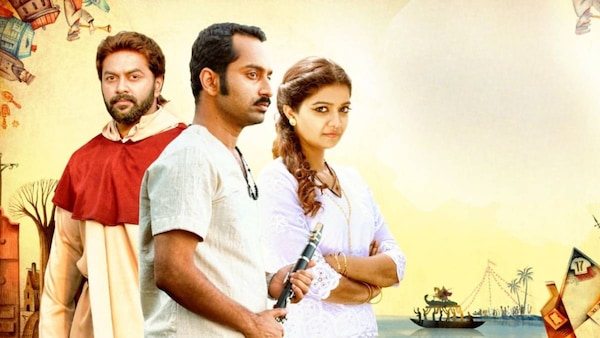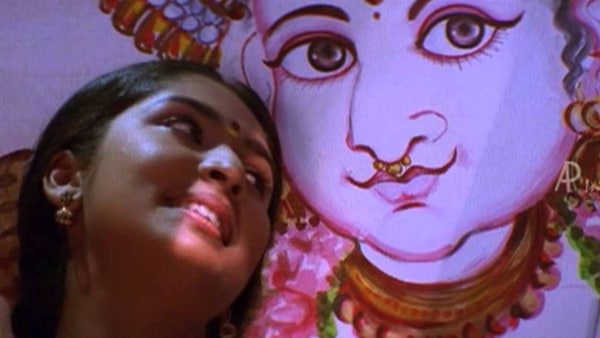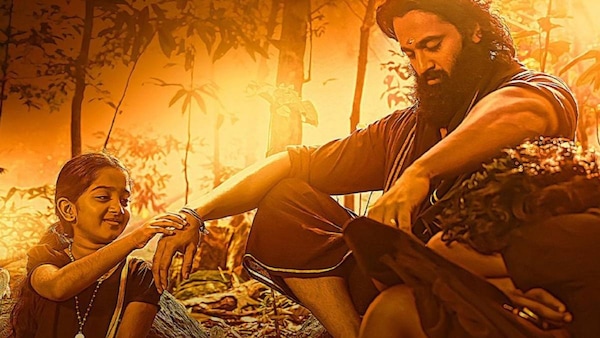Malikapurram To Manichitrathazhu, Malayalam Cinema's Tryst With Faith & The Fantastical
Lonely individuals who seek succour in mysterious beings, yakshis who emerge to protect the vulnerable — Neelima Menon revisits Malayalam movies that have ventured into realms fantastical.

Last Updated: 04.52 PM, May 03, 2023
This column was originally published as part of our newsletter The Daily Show on May 3, 2023. Subscribe here. (We're awesome about not spamming your inbox!)
***
IN Malikappuram, released in December 2022, the protagonist — a little girl called Kalyani — is a devotee of Lord Ayappa. This devotion has its roots in her birth: she is seemingly born to her parents after years of prayers to the deity. At just eight years old, her entire mindset is geared towards completing a pilgrimage to Sabarimala.
It is a little baffling to buy this narrative of a child’s fervour — in large part due to the intent behind the narrative. Not only is Malikappuram amateurishly made, written and conceptualised, its manipulation is entirely unsubtle. With nearly every character chanting the name of Lord Ayyappa and the film’s use of children to reaffirm concepts of faith and sanctity, Malikappuram fails to rise above televised devotional soaps.
Malayalam cinema has a chequered track record of depicting faith and the fantastical. Some films have been able to tackle the subject with the deftness it deserves; others, not so much. Take Ranjith’s Nandanam (2002) for instance. Its core idea may not sound very different from Malikappuram’s, but the treatment and approach set it apart and make it the far superior work: Ayoung, orphaned girl spends every waking hour of her life thinking of Guruvayurappan.

For Balamani, who works as the house help of a large sprawling tharavadu where she tends to the ageing matriarch, Guruvayurappan is her confidante and best friend, with whom she shares every little event in her life. He fills a deep, emotional void in her and her life’s biggest ambition is to visit the Guruvayoor temple one day. So when Balamani falls in love with the scion of the family — and we know it requires more than a miracle to manifest their love story — we begin to wish for divine intervention. The narrative is so organically structured that, when Guruvayurappan casually walks in as the boy-next-door with a perpetual grin on his face, we aren’t averse to seeking his help. Look out for those little touches of magic he adds: black polka dots that miraculously appear and disappear from Balamani’s outfit, the would-be bride who elopes with her lover, or the fake mendicant who offers to manipulate their horoscopes.
At no point in Nandanam does Ranjith sell the idea of a sect; instead he crafts an innocent love story that will reach fruition with some help from the divine. The finale scene that has Guruvayurappan waltzing in front of the temple is a smart way of delineating the real from the fantastical in a very contemporary setting.
In Amen (2013), Lijo Jose Pellissery takes the help of a pastor to unite his protagonists Solomon and Sophie. From the moment Fr Vincent Vattoli aka St George disembarks on the shores of (the fictional village of) Kumaramkari, there is a whiff of mysticism in the air. The hints are delicate — whenever Vattoli passes a St George figurine, you hear a ping; on some occasions, Vattoli breaks into a sprightly jig out of nowhere. That he means business is clear when he effortlessly wins over the villagers with his earnest speech that fascinatingly laces together his childhood, growing up in Kumaramkari, and selling the much-contested idea of reinstating the local music band without much fuss. Amen leans heavily on our irresistible urge to temporarily suspend logic and facts, and explore an alternate universe. The irrationality is what pulls us towards such fantastical narratives. In a way, Vattoli and Nandanam’s Guruvayurappan are people we would love to switch places with, given a choice. Vattoli is Solomon’s hallucinatory cheerleader, the one who helps him fight his inner demons. And Lijo sets him up in a milieu that helps the fantastical to merge seamlessly with the real.

The same can be said about the Saint in Ranjith’s 2010 film, Pranchiyettan & the Saint. The Saint appears before Pranchi at a time when he seems to have failed in everything. Despite being a canny businessman, Pranchi seems to have had scant success. From being a school dropout; losing his childhood sweetheart; to his unsuccessful attempts at buying the Padmashri; as well as a last-ditch but failed attempt at redemption by helping Pauly, a Class 10 student, pass the Board Exams — Pranchi simply can’t catch a break.
And Ranjith once again adds mirth to the allegory of divinity — making sure the Saint speaks in chaste Thrissur slang like Pranchi, for instance. Here, the Saint slips into the role of therapist. As Pranchi recounts the events in his life, the Saint casually offers some perspective (laced with humour)... in a sense, acting as his inner voice. What remains obvious in Pranchi’s story — as with Balamani’s — is the loneliness that has shrouded most of their lives, persuading them to reach out to an invisible source of hope and happiness.
Then you have a Janakikutty, a lonely teenager with a hyperactive imagination and no friends, in 1998’s Ennu Swantham Janakikutty. Janaki befriends a yakshi — finding solace in this most feared of entities, to fight her claustrophobia. Janaki is of course impressionable, so much so that she starts reassessing the world through the ramblings of her old aunt, including internalising her ideas of caste, class, desire and morality. And since the yakshi folklore also came from her aunt, Janaki starts feeling a strange sisterhood with Kunjathol, the white vision she sees through her large, black-rimmed glasses.
We are told about a world where yakshis play with the lonely, and punish the cruel. The narrative manages to keep the ambiguity of whether or not Kunjathol’s world is a figment of Janaki’s imagination alive till the end. Even in Janakikutty’s world of yakshis — whether real or imaginary — caste and class hierarchies are firmly entrenched. The fair Brahmin yakshi, Kunjathol, is clearly at the top of the power pyramid, and she issues orders to the dusky Kari Neeli who tells her there are lesser yakshis standing guard for them. Kunjathol becomes Janaki’s alter ego and fights for her.
Meanwhile, in Padmarajan’s Njan Gandharvan (1991), we see a retelling of the old Gandharvan myth that is often used as a theme for rebellion and sexual awakening. A teenaged Bhama is on the threshold of a sexual awakening with a celestial stranger: It is the taste of forbidden pleasures at an age where you are cloistered under the patriarchal structures of your family that prompts Bhama to brave the paranormal and fall into a world of sensuous self-discovery. Myth has always fascinated teenagers. Padmarajan creates a bouquet of magic trails to usher in the celestial being — a cluster of butterflies, the fragrance of plumeria flowers, and the sky lit with glow worms.
A discussion of the fantastical would not be complete without referring to its depiction in the engaging Manichitrathazhu (1993). Here, the paranormal is ultimately revealed as a manifestation of the psychological turmoil within Ganga (Shobana). Her lonely childhood was spent in her grandmother’s lap, who told her tales of spirits and yakshis. The haint, Nagavally, who haunts Ganga’s in-laws’ home later in her life, turns out to be her split personality. It can also be read as a soul fighting a patriarchal system, with the Nagavally persona seeking vengeance for having her agency snatched away. Eventually, Nagavally is banished, and Ganga goes back to placid domesticity.
